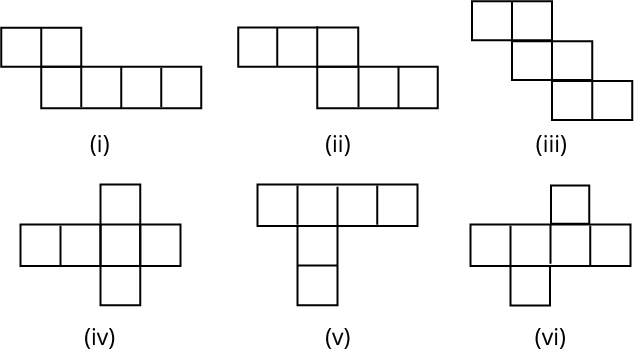Visualising Solid Shapes - Exercise-wise Questions and Answers For Class 7 Maths - Free PDF Download
FAQs on NCERT Solutions For Class 7 Maths Chapter 13 Visualising Solid Shapes - 2025-26
1. What key topics are covered in the NCERT Solutions for Class 7 Maths Chapter 13, Visualising Solid Shapes?
The NCERT Solutions for Chapter 13, 'Visualising Solid Shapes', cover the following key topics as per the CBSE 2025-26 syllabus:
- Identifying 2D and 3D shapes.
- Understanding the different parts of a solid: faces, edges, and vertices.
- Creating nets for building 3D shapes.
- Drawing solids on a flat surface using oblique sketches and isometric sketches.
- Visualising solid objects from different perspectives (top, front, and side views).
2. I find visualising 3D shapes on 2D paper difficult. How do the NCERT solutions for Chapter 13 break down this process?
The NCERT solutions for Chapter 13 are designed to simplify this process. They use a step-by-step approach for drawing complex shapes. For instance, when creating an isometric sketch, the solutions guide you on how to use the dot grid to accurately represent length, breadth, and height. They also explain how to construct nets for shapes like cubes and pyramids, helping you understand how a 2D pattern folds into a 3D object.
3. Why is it important to follow the step-by-step method shown in NCERT Solutions for this chapter?
Following a step-by-step method, as demonstrated in the NCERT solutions, is crucial for accuracy. Visualising solid shapes involves multiple components like faces, edges, and vertices. A systematic approach ensures you don't miss any element. For instance, when drawing different views of an object (top, front, side), a methodical process guarantees that each view is drawn correctly and corresponds to the others, preventing confusion and errors.
4. How do the NCERT Solutions for Chapter 13 explain how to draw the top, front, and side views of a solid shape?
The NCERT solutions explain this by taking simple, everyday objects as examples. They demonstrate how to:
- Imagine looking directly down at the object for the top view.
- Look at it straight on for the front view.
- Look from the side for the side view.
The solutions provide clear, labelled diagrams for each view, helping you understand how a 3D object can be represented through multiple 2D perspectives.
5. What are common mistakes students make when drawing nets for solids, and how do the NCERT solutions address them?
A common mistake is creating a net that doesn't fold correctly into the desired 3D shape, often because the faces are misplaced or overlap. The NCERT solutions for Chapter 13 address this by providing multiple correct nets for a single solid (like a cube) and explaining why certain arrangements work while others fail. They encourage practical verification by showing how to trace, cut, and fold the nets shown in the solutions.
6. How do the NCERT Solutions for Chapter 13 help in differentiating between oblique and isometric sketches?
The NCERT Solutions for Class 7 Maths Chapter 13 provide clear, step-by-step methods for drawing both types of sketches. They explain that an oblique sketch does not have proportional lengths and can look distorted, while an isometric sketch is drawn on special dot paper to maintain the exact proportions of the solid shape, giving a more realistic representation. The solutions demonstrate this with solved examples from the textbook.
7. How is Euler's formula explained and applied in the NCERT Solutions for Chapter 13?
The NCERT solutions explain Euler's formula (F + V - E = 2) by first defining faces (F), vertices (V), and edges (E). They then provide solved examples where you count these elements for various polyhedrons like cubes and pyramids to verify the formula. This step-by-step verification helps you understand the relationship between the three elements for any solid shape covered in the syllabus.
8. Do the NCERT Solutions for Chapter 13 cover all the problems, including the 'Try These' sections?
Yes, the NCERT Solutions for Class 7 Maths Chapter 13 are comprehensive. They provide detailed, step-by-step answers for all the questions from the main exercises (e.g., Ex 13.1, 13.2). They also include solutions for the problems given in the 'Try These' boxes, ensuring a complete and thorough preparation resource.

























